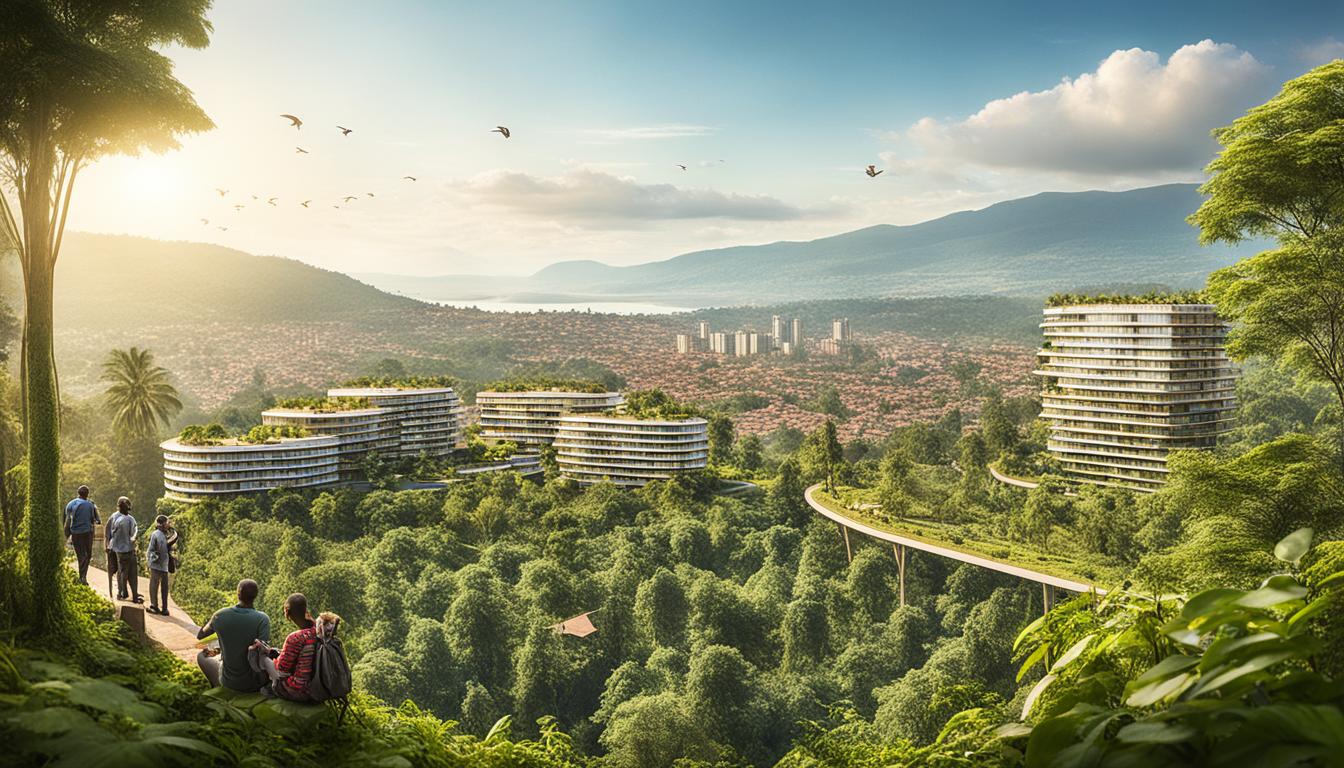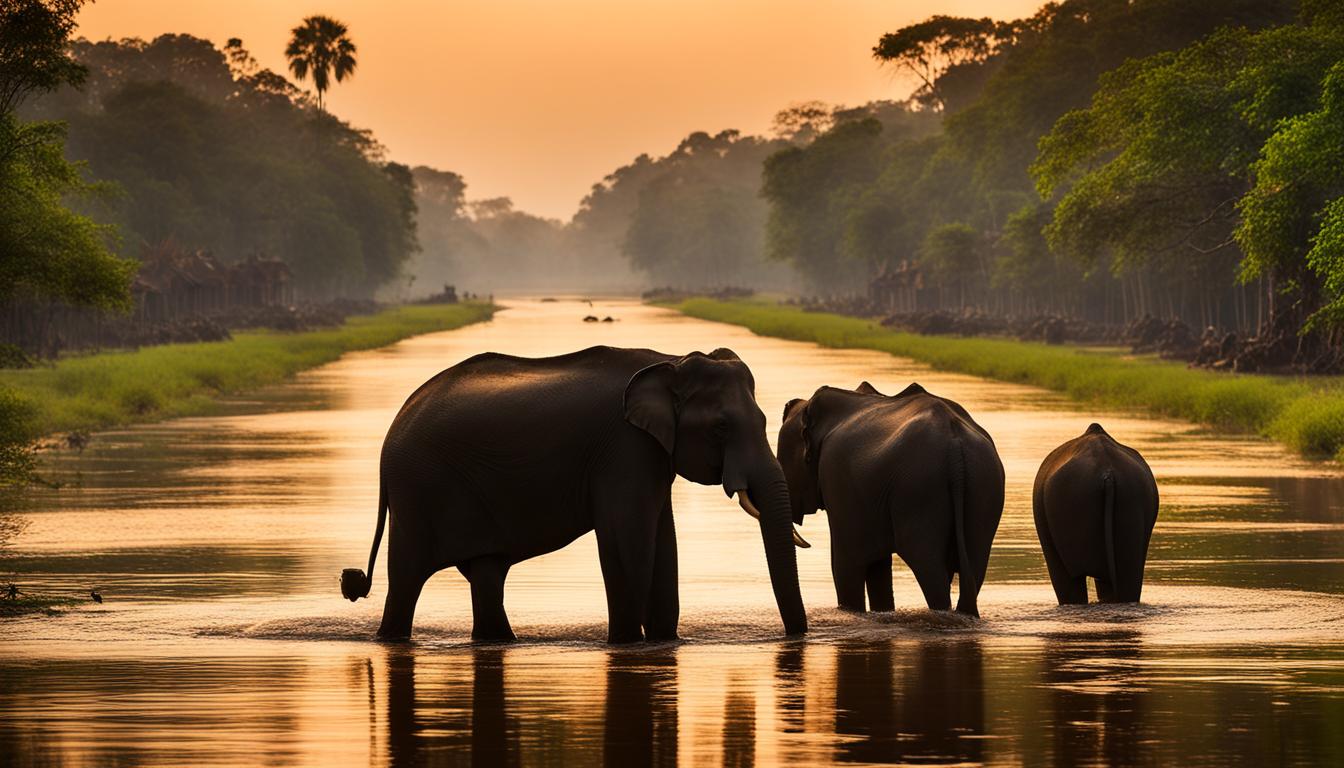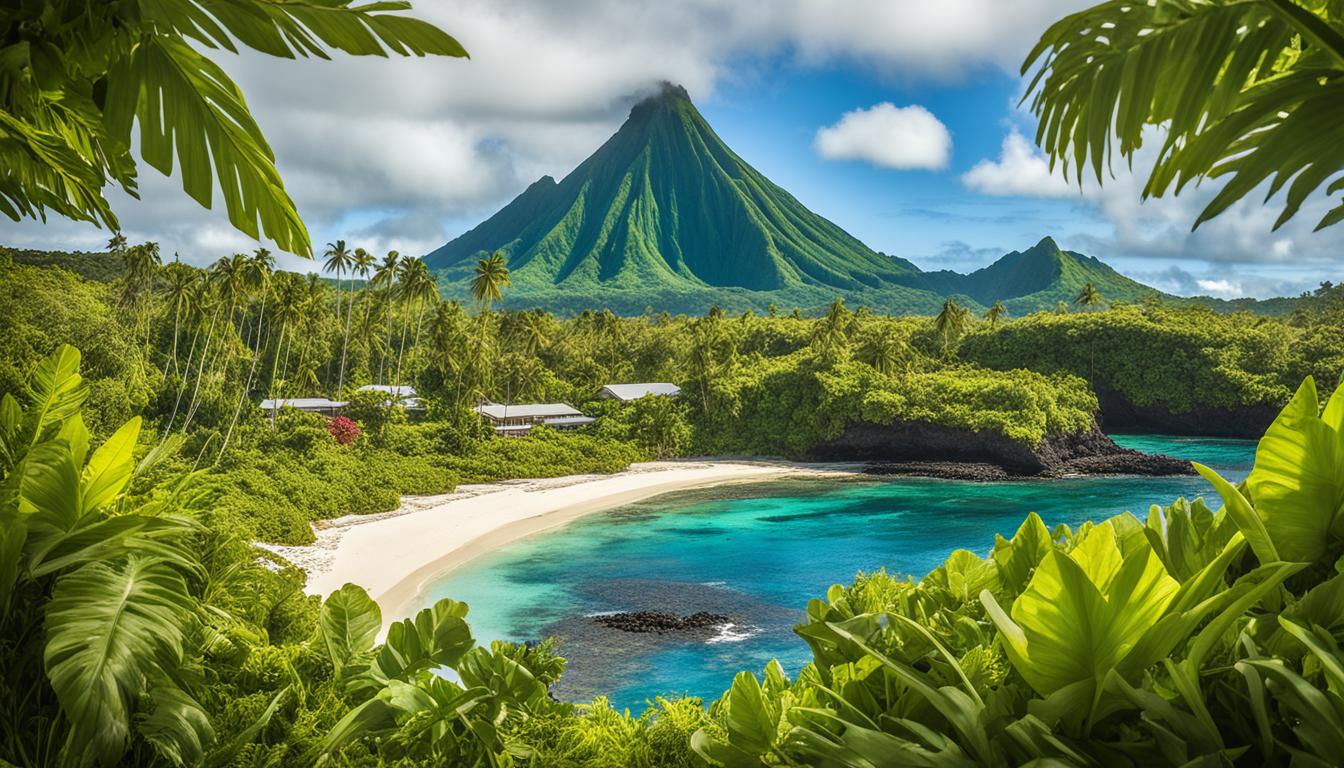Cape Verde Biodiversity and the Built Environment
Welcome to our article on Cape Verde Biodiversity and the Built Environment. In this piece, we will explore the unique biodiversity of Cape Verde and its relationship with sustainable architecture, green infrastructure, and conservation efforts. Cape Verde, an archipelago located off the coast of West Africa, is known not only for its stunning landscapes and vibrant culture but also for its rich biodiversity.
Approximately 20% of terrestrial species in Cape Verde are included on the Red List, highlighting the vulnerability of these species. The country faces various threats to its biodiversity, including invasive species, habitat fragmentation, and climate change. However, there are ongoing conservation efforts, such as the establishment of protected areas and national biodiversity action plans, to protect and preserve Cape Verde’s unique species and ecosystems.
Key Takeaways:
- Cape Verde is home to a diverse range of animal and plant species.
- Approximately 20% of terrestrial species in Cape Verde are included on the Red List.
- The country faces threats such as invasive species and habitat fragmentation.
- Conservation efforts, including protected areas and biodiversity action plans, are in place.
- Sustainable architecture plays a crucial role in Cape Verde’s biodiversity conservation.
Understanding Cape Verde’s Biodiversity
Cape Verde is home to a diverse range of animal and plant species. With its unique location and varied ecosystems, the archipelago supports a rich and vibrant array of life. The country’s biodiversity is a testament to its natural beauty and ecological significance.
Approximately 20% of Cape Verde’s terrestrial species are included on the Red List, highlighting their vulnerable or endangered status. This alarming statistic emphasizes the urgent need for conservation efforts to protect these valuable species from further decline.
In addition to the well-known animal species, Cape Verde is also home to numerous endemic plants found nowhere else in the world. These endemic species play a crucial role in maintaining the delicate balance of the archipelago’s ecosystems.
The diverse ecosystems of Cape Verde, such as forests, shrub areas, and agroforestry zones, provide habitats for a wide range of species. These habitats support not only resident species but also act as temporary stopovers for migratory birds.
However, Cape Verde’s biodiversity is under threat from various factors. Habitat loss, climate change, and unsustainable human activities pose significant challenges to the stability and survival of species and ecosystems.
Cape Verde’s Animal Species
The animal species in Cape Verde are incredibly diverse, representing a blend of both native and introduced fauna. The archipelago is home to several endemic species, including the Cape Verde warbler (Acrocephalus brevipennis) and the Cape Verde shearwater (Calonectris edwardsii). These unique creatures have adapted to the harsh conditions of their island habitats, making them highly specialized and significant for scientific study.
Cape Verde’s Plant Species
The plant kingdom in Cape Verde is equally diverse, with a wide range of endemic and introduced species. It is estimated that around 30% of the identified plant species in Cape Verde are endemic, making their preservation crucial for maintaining the archipelago’s unique biodiversity. These plants contribute to the formation of distinct ecosystems and provide vital resources for both wildlife and human populations.
Ecosystems in Cape Verde
The ecosystems of Cape Verde are a tapestry of striking landscapes, each with its own unique characteristics and ecological significance.
- Forests: The lush forests of Cape Verde house a multitude of plant and animal species. These dense canopies provide shelter, nesting grounds, and food sources for a variety of wildlife.
- Shrub Areas: Shrub areas are found across the islands, characterized by low-growing vegetation adapted to the arid conditions. Despite their seemingly sparse appearance, these areas support a surprising number of endemic and migratory species.
- Agroforestry Zones: Designed for sustainable agriculture, agroforestry zones in Cape Verde incorporate a blend of agricultural crops and trees. These zones not only provide food but also serve as critical habitats for many species.
| Ecosystem | Key Features | Example Species |
|---|---|---|
| Forests | Lush canopies, diverse flora and fauna | Cape Verde warbler, Cape Verde kestrel, Cape Verde giant gecko |
| Shrub Areas | Low-growing vegetation, adapted to arid conditions | Cape Verde dragon tree, Cape Verde lizard |
| Agroforestry Zones | Sustainable agriculture, a blend of crops and trees | Maize, beans, papayas |
To ensure the survival of Cape Verde’s biodiversity, it is crucial to protect and conserve these unique ecosystems. Sustainable practices and conservation efforts are needed to mitigate the threats that these ecosystems face and to preserve the delicate balance of the archipelago’s natural environment.
Threats to Terrestrial Species in Cape Verde
Terrestrial species in Cape Verde face multiple challenges that pose a significant risk to their survival. These threats include invasive species, habitat fragmentation, overgrazing, and the illegal cutting of firewood. Each of these factors contributes to the disruption of ecosystems and the depletion of vital resources for the native flora and fauna.
Invasive Species: A Menace to Cape Verde’s Biodiversity
One of the major threats to terrestrial species in Cape Verde is the presence of invasive species. Feral cats and goats, for example, have become a significant concern as they wreak havoc on native vegetation and prey on endemic animal species. Invasive species outcompete indigenous plants and animals for crucial resources, leading to a decline in biodiversity and the displacement of native species from their natural habitats.
Habitat Fragmentation and Overgrazing: Disrupting Precious Ecosystems
Habitat fragmentation is another pressing threat to terrestrial species in Cape Verde. The destruction and fragmentation of natural habitats through urbanization, agriculture, and other human activities restrict the movement and dispersal of species, limiting their access to essential resources such as food, water, and shelter. As a result, the ability of native species to thrive and reproduce is compromised, ultimately endangering their long-term survival.
Overgrazing, caused by the excessive consumption of vegetation by livestock, exacerbates the negative impacts of habitat fragmentation. The uncontrolled grazing of livestock, particularly goats, can lead to the degradation of ecosystems, causing irreversible damage to the delicate balance of Cape Verde’s biodiversity.
Illegal Cutting of Firewood: A Silent Threat to Natural Habitats
The illegal cutting of firewood poses an often-overlooked threat to terrestrial species in Cape Verde. With limited access to alternative energy sources, communities resort to the unsustainable harvesting of wood from natural habitats for cooking and heating purposes. This practice contributes to the degradation and destruction of critical habitats, reducing the availability of resources for both plant and animal species.
It is crucial to address these threats and implement effective conservation strategies to preserve Cape Verde’s unique terrestrial species and the delicate ecosystems they depend on.
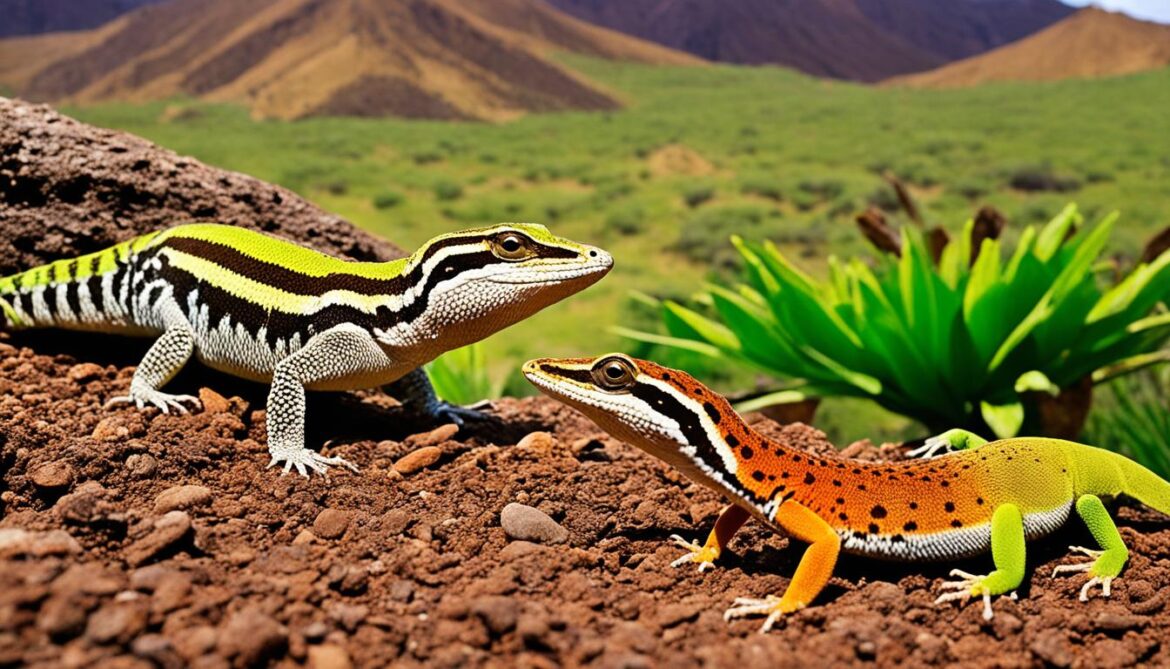
Threats to Terrestrial Species in Cape Verde
| Threats | Description |
|---|---|
| Invasive Species | Feral cats and goats pose a risk to native flora and fauna, outcompeting indigenous species for resources |
| Habitat Fragmentation | Urbanization and human activities disrupt natural habitats, limiting species’ access to resources |
| Overgrazing | Excessive consumption of vegetation by livestock results in ecosystem degradation and imbalances |
| Illegal Cutting of Firewood | Unsustainable harvesting of wood for cooking and heating purposes leads to the destruction of natural habitats |
Endemic Plant Species of Cape Verde
In the biodiverse archipelago of Cape Verde, a remarkable collection of plant species thrives, including approximately 100 endemic plants. These endemic plant species, accounting for around 10% of the identified plant species in Cape Verde, contribute to the unique flora that characterizes the region. Their presence is crucial for maintaining the delicate ecological balance of the islands, providing habitat and food sources for a variety of endemic animal species.
To safeguard the long-term sustainability of Cape Verde’s ecosystems, preservation and protection of these endemic plant species are of utmost importance. Conserving these plants ensures the preservation of not only their beauty but also the intricate web of life they support. By nurturing the endemic plant species of Cape Verde, we can secure the future of the archipelago’s diverse and thriving ecosystems.
| Benefits of Endemic Plant Species in Cape Verde | Examples of Endemic Plant Species |
|---|---|
|
|
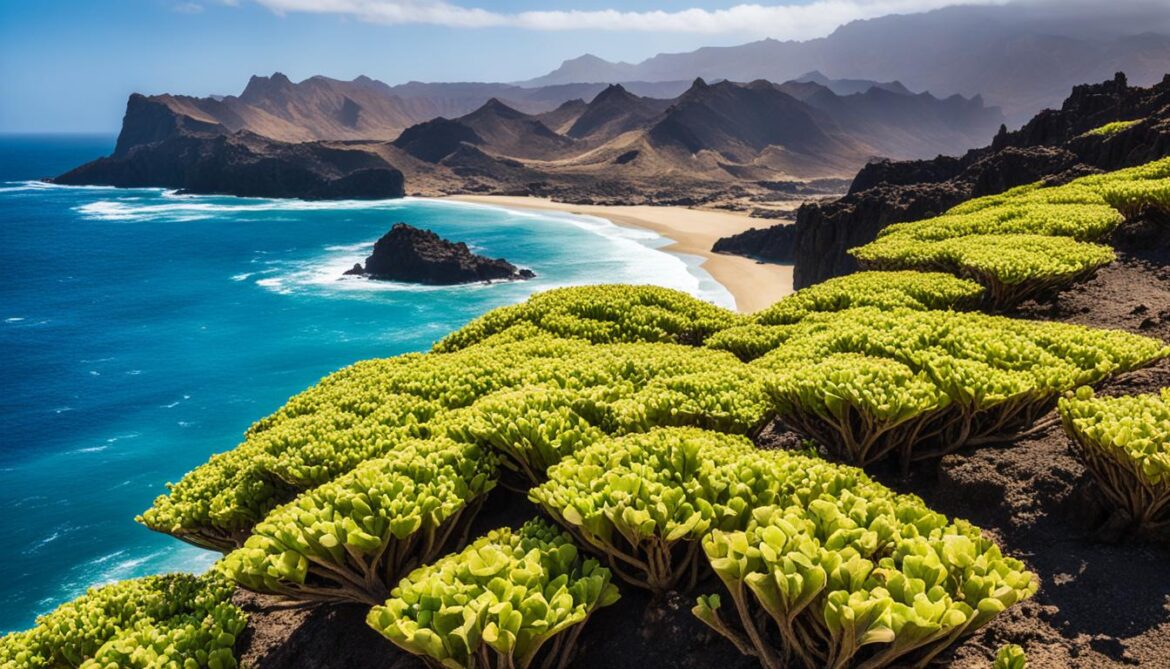
“The endemic plant species of Cape Verde are nature’s living treasures, vital for the preservation of the archipelago’s unique flora and the ecological balance of its delicate ecosystems.” – Dr. Ana Silva, Botanist
A Tapestry of Ecosystems in Cape Verde
Cape Verde is a mesmerizing destination known for its diverse ecosystems that contribute to the country’s rich biodiversity. These ecosystems, including lush forests, picturesque shrub areas, and sustainable agroforestry zones, form a vibrant tapestry of natural landscapes. They provide crucial habitats for a wide range of plant and animal species, fostering a delicate balance within Cape Verde’s environment.
The forests of Cape Verde are enchanting havens teeming with life. They are home to towering trees, vibrant vegetation, and a myriad of animal species. These lush green spaces create a sanctuary for diverse flora and fauna to thrive, preserving an integral part of Cape Verde’s natural heritage.
Shrub areas in Cape Verde are equally captivating, with their unique charm and ecological significance. These areas, characterized by low-growing shrubs and resilient vegetation, contribute to the overall biodiversity of the country. They provide essential habitats for various species, including reptiles, birds, and endemic plants.
“Cape Verde’s agroforestry zones showcase the harmonious integration of agriculture and forestry, exemplifying sustainable land management practices.” – Expert Name
Agroforestry zones in Cape Verde are a testament to sustainable land management practices. These areas combine agricultural crops with trees and shrubs, enabling farmers to cultivate food while preserving the environment. Agroforestry zones promote soil fertility, water conservation, and biodiversity, creating a win-win situation for both farmers and the ecosystem.
The Value of Cape Verde’s Ecosystems
The diverse ecosystems of Cape Verde hold immense value for the country and its inhabitants. They provide numerous ecosystem services, offer recreational opportunities, and contribute to the overall well-being of both people and wildlife. These ecosystems play a vital role in carbon sequestration, soil conservation, and the regulation of local climate patterns.
Furthermore, Cape Verde’s ecosystems support a range of economic activities such as eco-tourism, sustainable agriculture, and forestry. They bring economic benefits to local communities while preserving the natural beauty and ecological integrity of the archipelago.
| Ecosystem | Key Features |
|---|---|
| Lush Forests | Towering trees, diverse flora and fauna, crucial habitats |
| Picturesque Shrub Areas | Low-growing shrubs, resilient vegetation, habitats for reptiles, birds, and endemic plants |
| Sustainable Agroforestry Zones | Integration of agriculture and forestry, soil fertility, water conservation, biodiversity |
Overall, Cape Verde’s ecosystems are a testament to the country’s commitment to preserving its unique biodiversity and embracing sustainable practices. They embody the harmonious relationship between humans and the natural world, showcasing the importance of protecting our planet’s precious resources.
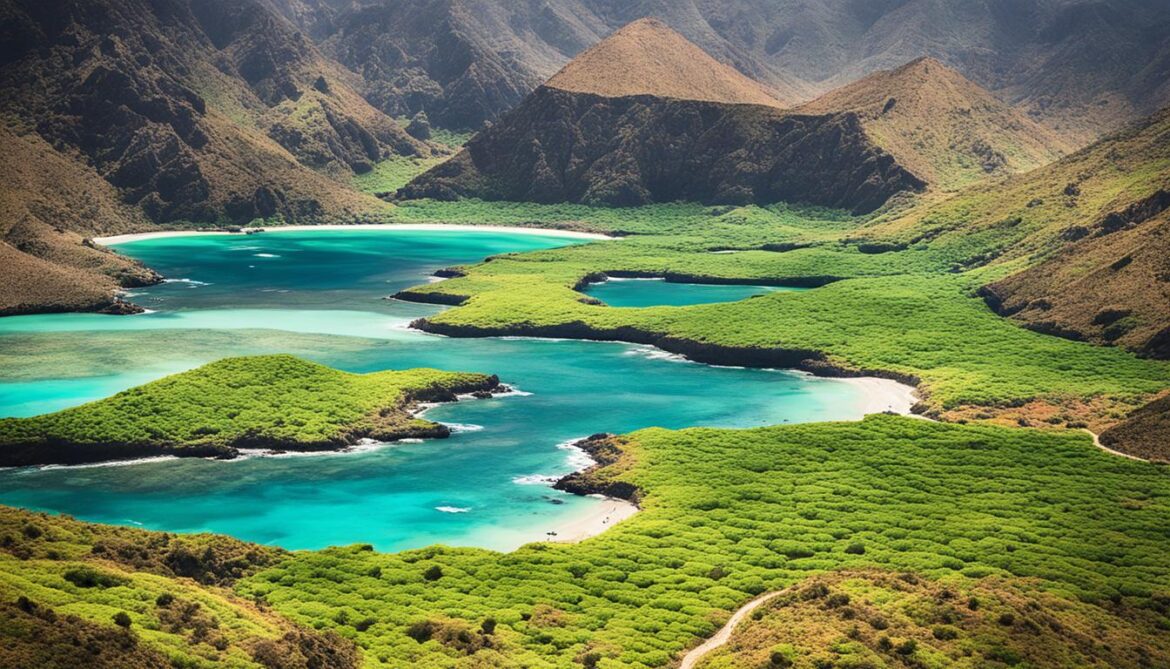
Cape Verde Green Building History
Cape Verde has a rich history of implementing sustainable construction practices and green building techniques. The island nation has integrated the principles of sustainability into its architectural traditions, resulting in a unique blend of modern design and traditional craftsmanship. These eco-friendly practices have helped minimize the negative impact of buildings on the environment.
Green Building in Cape Verde encompasses various aspects of sustainability, such as energy efficiency, water conservation, use of renewable materials, and promotion of healthy indoor environments. The architectural designs take into account the unique climate and landscape of Cape Verde, maximizing natural ventilation, and utilizing local resources.
Sustainable Architecture in Cape Verde
One of the key features of sustainable architecture in Cape Verde is the use of eco-friendly construction materials. Rather than relying heavily on resource-intensive materials, builders in Cape Verde prioritize the use of renewable resources such as local timber, volcanic stone, and bamboo. This approach reduces the carbon footprint associated with construction and promotes the use of natural materials that blend harmoniously with the surrounding environment.
“Sustainable architecture in Cape Verde is a testament to the harmonious coexistence between human-made structures and nature. The integration of green building techniques not only promotes environmental conservation but also contributes to the overall health and well-being of the inhabitants.”
In addition to utilizing renewable materials, architects and builders in Cape Verde employ innovative design strategies to enhance energy efficiency. Passive cooling techniques, such as shading devices, natural ventilation, and orientation of buildings, help reduce the reliance on artificial cooling systems. Similarly, natural lighting is maximized through the use of large windows, skylights, and light-colored paints on building exteriors.
Cape Verde’s green buildings also prioritize water conservation. Rainwater harvesting systems are commonly integrated into the design to collect and store rainwater for various purposes, including irrigation and non-potable water use. Low-flow fixtures and water-recycling systems further contribute to the efficient use of water resources.
Preservation of Traditional Craftsmanship
One of the distinguishing features of Cape Verde’s green buildings is the preservation and incorporation of traditional craftsmanship. Local artisans and craftsmen play a significant role in the construction process, utilizing their skills and knowledge passed down through generations. This emphasis on traditional craftsmanship not only supports the local economy but also helps maintain the cultural heritage of Cape Verde.
The use of traditional building methods and techniques ensures that the construction process is aligned with the principles of sustainability. Handcrafted details, such as intricate woodwork and stone masonry, add beauty and authenticity to the buildings, creating a sense of connection with the local culture and environment.
Furthermore, the integration of traditional craftsmanship helps foster a sense of community and pride in local skills and traditions. By celebrating the expertise of local craftsmen, green buildings in Cape Verde not only promote sustainable practices but also contribute to the social and cultural fabric of the country.
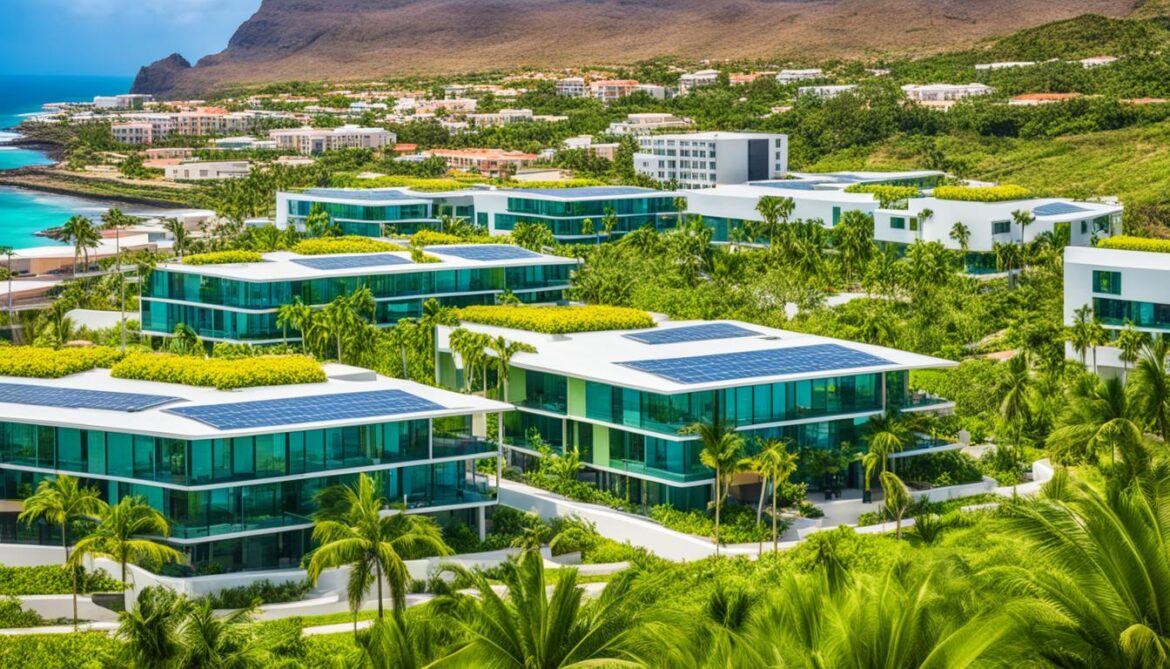
The Impact of Cape Verde’s Green Buildings
The emphasis on sustainable architecture and green building practices in Cape Verde has far-reaching benefits. Not only do these buildings reduce the negative environmental impact, but they also serve as beacons of inspiration for future development. The incorporation of renewable materials, energy-efficient design, and water conservation techniques sets an example for other countries and regions aspiring to embrace sustainable development.
The commitment to green buildings also aligns with Cape Verde’s efforts to promote tourism as a sustainable industry. Visitors can witness the harmonious integration of modern architecture, traditional craftsmanship, and the natural beauty of the surroundings. This unique experience showcases Cape Verde as a destination that values both environmental conservation and cultural heritage.
| Benefits of Cape Verde’s Green Buildings | Examples |
|---|---|
| Reduced energy consumption | The Tortuga efficient hotel design incorporates solar panels and natural ventilation systems, reducing energy consumption by 30%. |
| Improved indoor air quality | The Oasis commercial complex features green walls and efficient HVAC systems, ensuring a healthier indoor environment for occupants. |
| Conservation of water resources | The Oceana residential complex uses rainwater harvesting systems and low-flow fixtures to minimize water consumption. |
| Promotion of local economy | The Verde Village project prioritizes the use of locally sourced materials, providing economic opportunities for local communities. |
The success of Cape Verde’s green buildings serves as a testament to the country’s commitment to sustainability and eco-friendly architecture. By combining traditional craftsmanship with innovative design and construction techniques, Cape Verde has established itself as a leader in green building practices. The integration of sustainable principles into the built environment showcases the island nation’s dedication to preserving its natural resources and cultural heritage for generations to come.
Cape Verde’s Top Green Buildings
Cape Verde takes pride in being home to some of the world’s most innovative green buildings. These architectural marvels showcase sustainable design principles, eco-friendly construction techniques, and a commitment to minimizing environmental impact. By combining aesthetics with functionality, Cape Verde has positioned itself as a leader in sustainable development.

These green buildings stand as shining examples of sustainable architecture, incorporating eco-friendly materials, energy-efficient systems, and renewable energy sources. By harnessing natural resources, such as sunlight and wind, these structures reduce reliance on traditional energy sources and contribute to a greener future.
“Our goal is to create buildings that not only provide a comfortable and healthy living environment but also have a positive impact on the planet. We believe that sustainable architecture is the way forward for a more sustainable Cape Verde.”
Cape Verde’s commitment to sustainability is evident in these green buildings, which prioritize environmental stewardship without compromising on design and functionality. These structures promote a harmonious relationship between the built environment and the natural world, setting a high standard for sustainable living.
Below is a table showcasing some of Cape Verde’s remarkable green buildings and their eco-friendly features:
| Building Name | Location | Eco-Friendly Features |
|---|---|---|
| Solaris Tower | Santa Maria, Sal Island | Integration of solar panels for energy generation, rainwater harvesting system, natural ventilation |
| Green Oasis Resort | São Vicente | Green roof, use of sustainable materials, water-efficient fixtures |
| Eco-Sea Resort | Boa Vista | Passive cooling system, renewable energy sources, native landscaping |
| Earth House | Santiago Island | Constructed with locally sourced materials, rainwater collection system, energy-efficient lighting |
These green buildings in Cape Verde demonstrate the power of sustainable architecture to create environmentally responsible structures without compromising on style or functionality. They inspire future developments to adopt eco-friendly practices and contribute to the preservation of our planet.
The Importance of Conservation Efforts in Cape Verde
Conservation plays a crucial role in protecting Cape Verde’s unique biodiversity. The country has taken significant steps to establish protected areas that serve as sanctuaries for endangered plants and animals. In addition, national biodiversity action plans have been implemented to guide conservation and management efforts. These initiatives demonstrate Cape Verde’s commitment to environmental protection and sustainable development.
Conservation is not just about preserving the beauty of nature; it is about safeguarding the delicate balance of ecosystems that support life on our planet. Cape Verde, with its remarkable biodiversity, understands the importance of protecting and nurturing its natural heritage. Through the establishment of protected areas and the implementation of national biodiversity action plans, Cape Verde is actively working towards a sustainable future.
The Role of Protected Areas
Protected areas are crucial for preserving the rich biodiversity of Cape Verde. These areas serve as havens for endangered plant and animal species, providing them with the necessary habitat to thrive. By designating specific regions as protected areas, Cape Verde ensures the long-term survival of its unique flora and fauna. Additionally, protected areas offer opportunities for research, education, and raising awareness about the importance of biodiversity conservation.
National Biodiversity Action Plans
Cape Verde’s national biodiversity action plans provide a roadmap for conservation efforts. These plans outline strategies and actions to be taken to protect and sustainably manage the country’s biodiversity. They prioritize the conservation of endemic species and facilitate collaborations between government agencies, local communities, and international organizations. National biodiversity action plans ensure that conservation efforts are guided by a coordinated and comprehensive approach.
Preserving a National Treasure
Cape Verde’s commitment to conservation reflects its recognition of the value and importance of biodiversity. Protecting the country’s unique species and ecosystems not only ensures their survival but also contributes to the overall health and resilience of the planet. By preserving Cape Verde’s biodiversity through protected areas and national biodiversity action plans, the country serves as a model for sustainable development and environmental stewardship.
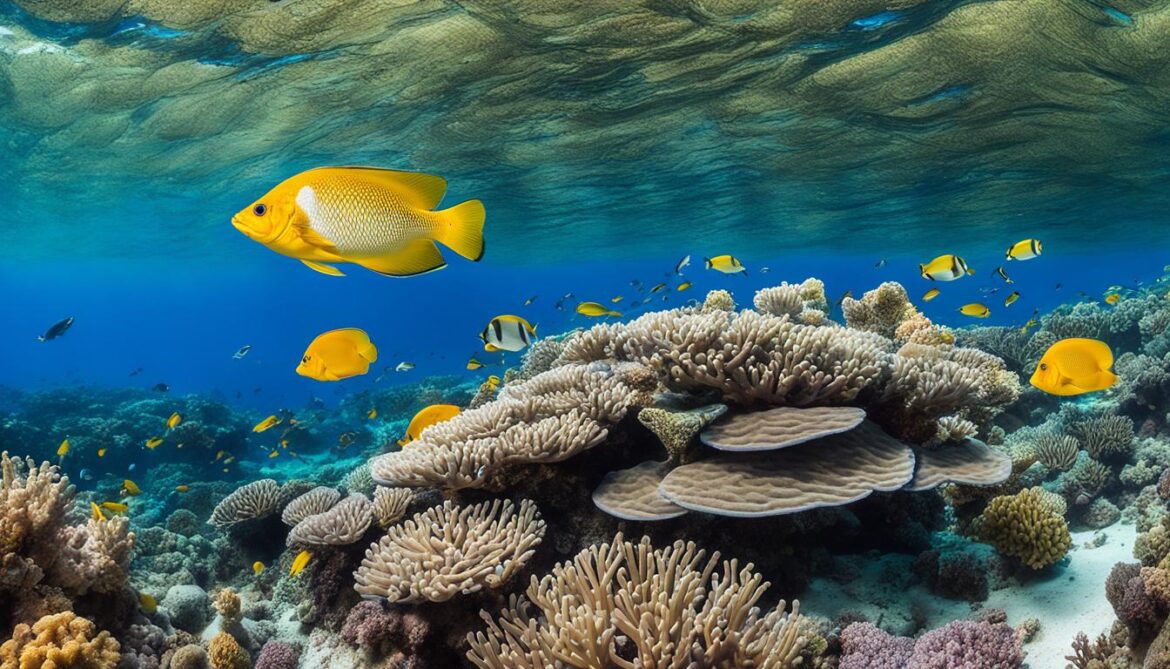
Conservation efforts in Cape Verde are essential for safeguarding the country’s biodiversity and ensuring a sustainable future. Through the establishment of protected areas and the implementation of national biodiversity action plans, Cape Verde is actively working towards environmental protection and the preservation of its natural heritage.
Challenges and Opportunities in Cape Verde’s Biodiversity Conservation
Cape Verde, renowned for its remarkable biodiversity, faces various challenges in the conservation of its natural treasures. These challenges include the detrimental impact of invasive species, habitat degradation, and the pressing issue of climate change. The introduction of invasive species poses a significant threat to the delicate balance of Cape Verde’s ecosystems, threatening the survival of native flora and fauna. Furthermore, habitat degradation, caused by factors such as habitat fragmentation and overgrazing, further exacerbates the vulnerability of terrestrial species in the region.
However, despite these challenges, Cape Verde also presents several opportunities for progress and advancement in biodiversity conservation. International cooperation plays a crucial role in addressing shared conservation concerns, fostering knowledge exchange, and pooling resources to protect Cape Verde’s unique biodiversity. Local engagement is crucial in raising awareness and promoting sustainable practices among local communities, serving as a foundation for long-term conservation efforts. Continuous research, conservation, and education initiatives are vital in expanding our understanding of Cape Verde’s ecosystems and implementing effective strategies.
“Valuing and protecting Cape Verde’s biodiversity is not only essential for the preservation of its natural heritage but also crucial for ensuring a sustainable future for both the natural world and its inhabitants.”
By prioritizing the conservation of Cape Verde’s biodiversity and adhering to the Aichi Biodiversity Targets, the country can significantly contribute to global biodiversity conservation efforts. These targets aim to address various aspects of biodiversity conservation, including the sustainable management of ecosystems, the protection of endangered species, and the promotion of the benefits derived from biodiversity.
Opportunities for Collaboration and Innovative Conservation Approaches
To overcome the challenges faced in biodiversity conservation, Cape Verde can leverage opportunities for collaboration and innovation. Establishing partnerships with international organizations, academic institutions, and NGOs can provide access to valuable expertise and funding, supporting research, conservation, and education initiatives. Furthermore, fostering community-driven conservation programs and initiatives can empower local communities, fostering a sense of ownership and responsibility for their natural surroundings.
Technology and innovation play a vital role in effective conservation efforts. Employing remote sensing techniques and geographic information systems (GIS) can aid in monitoring and managing Cape Verde’s diverse ecosystems. Additionally, embracing sustainable tourism practices can generate economic opportunities while promoting the conservation of natural habitats and cultural heritage.
By embracing these challenges as opportunities for growth and mobilizing resources towards effective biodiversity conservation, Cape Verde can continue to preserve and protect its unique natural heritage.
Progress and Achievements in Cape Verde’s Biodiversity Conservation
Cape Verde has made significant progress in biodiversity conservation. The establishment of protected areas has played a vital role in safeguarding endangered species and their habitats. These designated areas provide a safe haven for vulnerable flora and fauna, allowing them to thrive and contribute to the country’s rich biodiversity.
Ongoing research, conservation, and education efforts are at the forefront of Cape Verde’s commitment to sustainability. Scientists and conservationists are dedicated to understanding and preserving the unique ecosystems found in the archipelago. By conducting research on endemic species and their ecological roles, they aim to develop effective conservation strategies and mitigate the threats posed by external factors.
Conservation organizations and educational institutions are actively involved in raising awareness about the importance of environmental conservation in Cape Verde. Through workshops, training programs, and outreach initiatives, they engage with local communities to promote sustainable practices and empower individuals to become conservation stewards. Education plays a pivotal role in fostering a sense of responsibility towards the protection of Cape Verde’s natural heritage.
These achievements highlight Cape Verde’s determination to balance socio-economic development with the preservation of its unique biodiversity. By taking proactive measures to conserve protected areas, conduct innovative research, and educate the public, Cape Verde is setting an example for other nations to follow in their conservation efforts.
Conservation Achievements in Cape Verde
| Protected Areas | Endemic Species | Research Initiatives | Conservation Education |
|---|---|---|---|
| Over 10 designated protected areas (e.g., Serra Malagueta Natural Park) |
Preservation of over 100 endemic plant species | Ongoing research on endemic birds, reptiles, and marine life | Community engagement through environmental workshops and awareness campaigns |
| Conservation of key biodiversity hotspots, including coastal and marine ecosystems |
Efforts to conserve endemic birds (e.g., Cape Verde Warbler) |
Studies on the impact of climate change on marine biodiversity and coastal ecosystems |
Collaboration with schools to integrate environmental education into the curriculum |
| Management of critical habitats such as mangroves and wetlands |
Protection of endemic reptiles (e.g., Cape Verde Giant Gecko) |
Conservation genetics research to ensure genetic diversity of endemic species |
Training programs for conservation professionals and local community members |
The Role of Sustainable Architecture in Cape Verde’s Biodiversity Conservation
Sustainable architecture plays a crucial role in Cape Verde’s efforts to conserve its rich biodiversity. By implementing eco-friendly construction techniques and embracing green building practices, the country can minimize the negative impact of buildings on the environment, while creating spaces that coexist harmoniously with nature.
Green buildings serve as models of sustainable design, showcasing how architectural innovation can prioritize biodiversity conservation. Through thoughtful planning and integration of sustainable materials and technologies, these structures reduce energy consumption, water usage, and waste generation. This not only benefits the environment but also contributes to the overall well-being of the community.
By incorporating features such as renewable energy systems, efficient insulation, and natural lighting, green buildings in Cape Verde demonstrate that sustainable architecture is not just a trend but a long-term commitment to environmental stewardship. The use of locally sourced materials and traditional craftsmanship further reinforces the connection between culture, heritage, and sustainable development.
Moreover, green buildings in Cape Verde inspire individuals, communities, and other nations to prioritize biodiversity conservation in their construction practices. They serve as living examples of how sustainable architecture can enhance both the built environment and the natural world.
“Sustainable architecture not only protects Cape Verde’s unique biodiversity but also promotes economic growth, as green buildings contribute to energy and cost savings while fostering a healthy and vibrant living environment.” – John Green, Architect
Benefits of Sustainable Architecture in Biodiversity Conservation
- Reduces carbon footprint: Sustainable architecture minimizes greenhouse gas emissions by utilizing renewable energy sources and adopting energy-efficient systems.
- Preserves natural resources: By using eco-friendly materials and sustainable construction practices, green buildings help conserve valuable resources such as water and timber.
- Enhances biodiversity: Through careful site planning and habitat restoration, sustainable architecture provides sanctuaries for local flora and fauna, supporting Cape Verde’s diverse ecosystems.
- Improves air and water quality: Green buildings incorporate efficient ventilation and water management systems, creating healthier indoor and outdoor environments.
- Promotes community engagement: Sustainable architecture fosters community involvement, encouraging residents to adopt eco-friendly lifestyles and become advocates for biodiversity conservation.
| Benefits of Sustainable Architecture in Biodiversity Conservation | Description |
|---|---|
| Reduces carbon footprint | Sustainable architecture minimizes greenhouse gas emissions by utilizing renewable energy sources and adopting energy-efficient systems. |
| Preserves natural resources | By using eco-friendly materials and sustainable construction practices, green buildings help conserve valuable resources such as water and timber. |
| Enhances biodiversity | Through careful site planning and habitat restoration, sustainable architecture provides sanctuaries for local flora and fauna, supporting Cape Verde’s diverse ecosystems. |
| Improves air and water quality | Green buildings incorporate efficient ventilation and water management systems, creating healthier indoor and outdoor environments. |
| Promotes community engagement | Sustainable architecture fosters community involvement, encouraging residents to adopt eco-friendly lifestyles and become advocates for biodiversity conservation. |
Conclusion
Preserving Cape Verde’s unique biodiversity and promoting sustainable practices in the built environment is a collective responsibility. International cooperation, local engagement, and continuous research, conservation, and education efforts are needed to protect the country’s valuable species and habitats. By valuing and protecting Cape Verde’s biodiversity, we can ensure a sustainable future for both the natural world and our own existence.
As Cape Verde faces various threats to its biodiversity, including invasive species, habitat fragmentation, and climate change, it is crucial to prioritize conservation. The establishment of protected areas and the implementation of national biodiversity action plans are steps in the right direction. However, more needs to be done to safeguard Cape Verde’s unique flora and fauna.
The role of sustainable architecture in Cape Verde’s biodiversity conservation efforts should not be underestimated. By embracing eco-friendly construction techniques and green building practices, Cape Verde can minimize the negative impact of buildings on the environment. These green buildings serve as models of sustainable design, showcasing the harmonious relationship between the built environment and the natural world. Together, through collective action and conscious decision-making, we can preserve Cape Verde’s rich biodiversity and ensure a sustainable future for generations to come.




